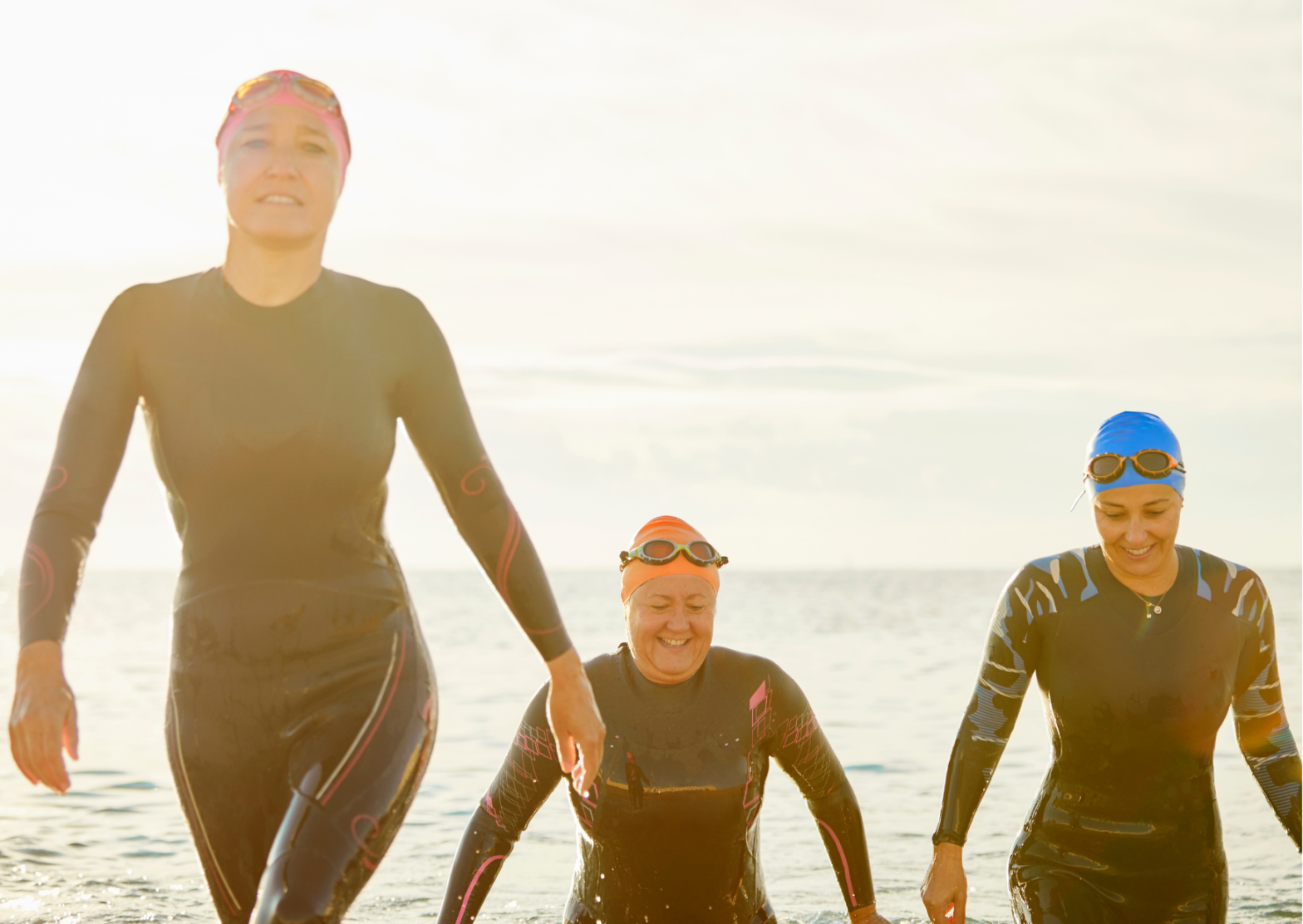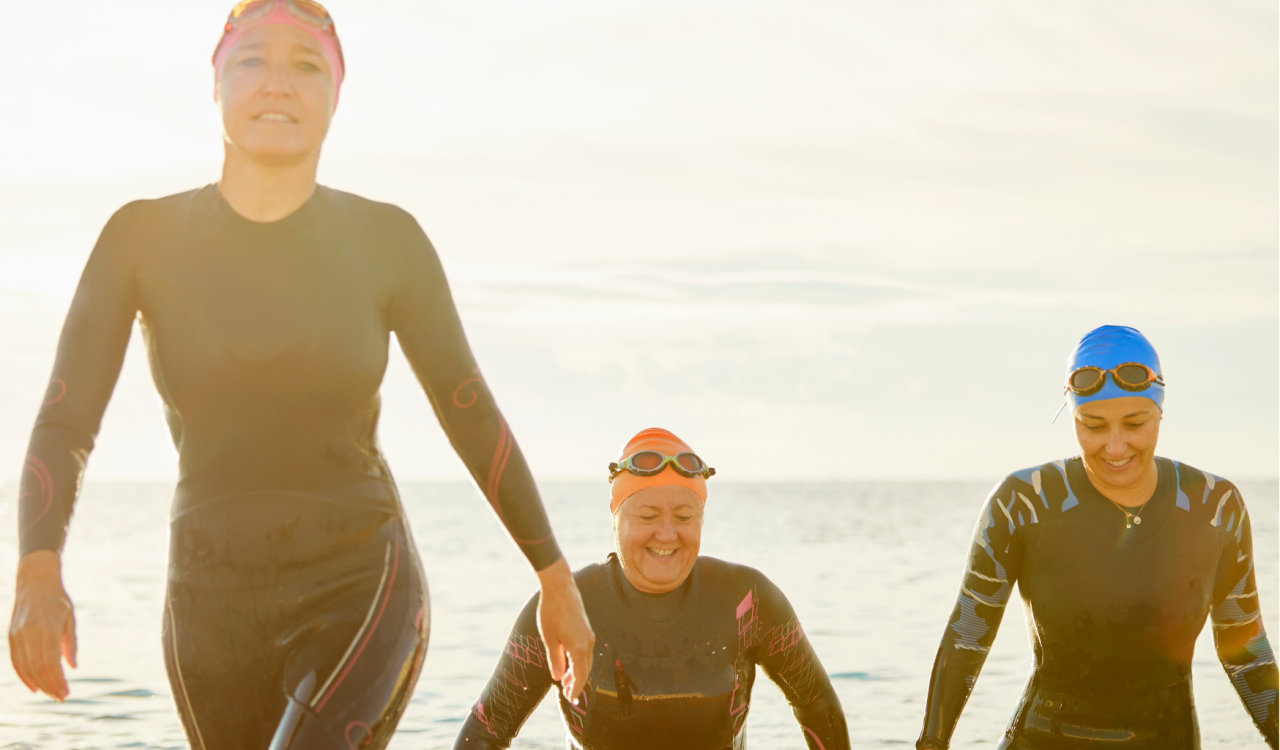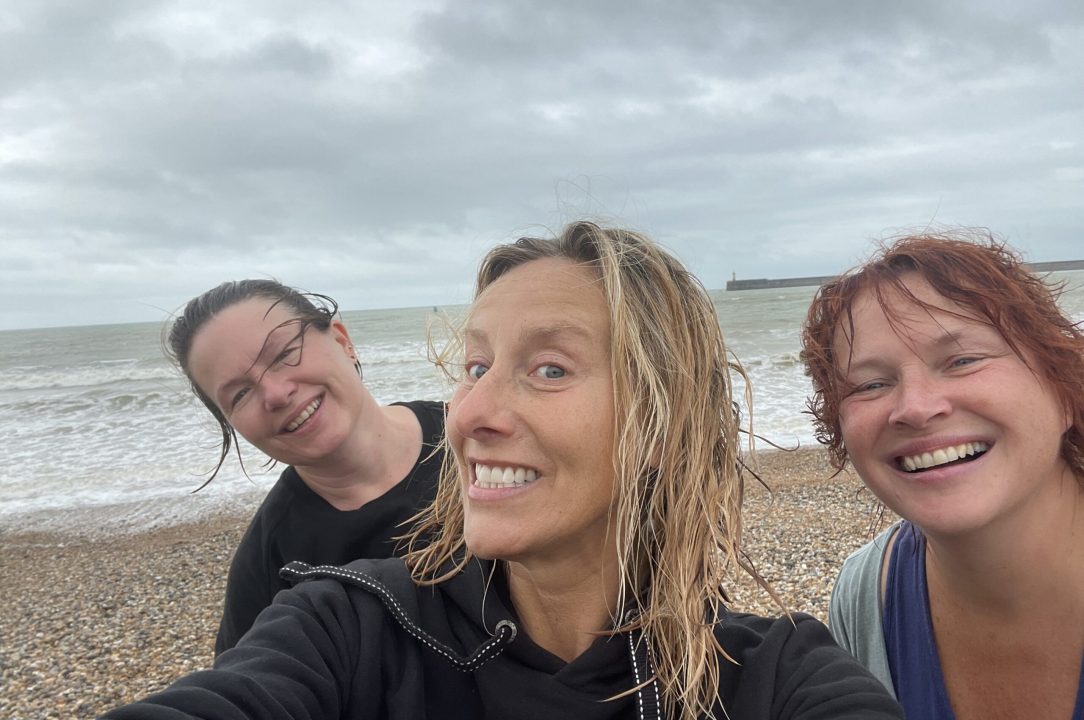How to Enjoy Swimming in the Sea in Winter


Cold Water Swimming – Winter.
Whether it was the Wim Hoff influence, and research on the all the positive health benefits, or simply the recognition that wild swimming was a great way to boost endorphins, more and more people took to the water during the winter months.
I’m writing this at the beginning of January, conscious of the fact that many people will be trying to get fit and healthy after the excesses of the festive season. But before you think “I’ll kick off the New Year with a cold dip”, if you’ve not ventured into the water since the summer – or even longer – I wouldn’t recommend you start now. The current water temperature can have a severe impact on the uninitiated, so here are a few things you’ll need to consider before taking the plunge in the winter.
What to wear
Whilst some people brave the winter waves clad in nothing more than a swimming costume or pair of budgie smugglers, for your first winters’ cold water swimming, it might be wise to don some warmer options!
Wetsuit
A wetsuit can be a vital piece of gear for cold water swimming. It’s designed to trap a thin layer of water between the suit and your body, which then warms up from your body heat, creating insulation. Wetsuits come in various thicknesses, and the choice depends on the water temperature.
Neoprene Boots and Gloves
Neoprene boots and gloves help keep your extremities warm. Cold water can quickly make fingers and toes numb, increasing the risk of hypothermia. Neoprene accessories provide additional insulation to these vulnerable areas.
Swimming Cap
A snug-fitting swim cap is essential for preventing heat loss through the head. Neoprene or thermal swim caps are particularly effective in colder waters, and you can always double up by wearing a woolly hat over the top!
Impacts of the cold water on the body
If you’re not used to regularly swimming in cold water, it’s important to understand the potential impact that lower temperatures can have on the body. All are preventable so it’s best to understand them before taking the plunge.
Cold Shock
Not to be confused with hypothermia, which occurs half an hour or so after first exposure, cold shock can be experienced any time the water is lower than 15 degrees. Take a look at the table below for average temperatures through the year in the South of England and also in the North. This shows just how cold the water can be throughout the year. In the UK, the sea rarely ventures outside the “cold water” bracket.
| Month | South Coast | Scotland |
| January | 7.1 – 10.4 °C | 7 – 8.8 °C |
| February | 6.7 – 10.3 °C | 6.3 – 8.3 °C |
| March | 6.2 – 9.8 °C | 6.3 – 8.3 °C |
| April | 8 – 11.3 °C | 7.4 – 9°C |
| May | 10.3 – 13 °C | 8.9 – 10.5 °C |
| June | 12.4 –15.2 °C | 10.8 – 12.8 °C |
| July | 14.3 – 16.9 °C | 12.5 – 14.7 °C |
| August | 15.9 – 18.7 °C | 13.1 – 15.7°C |
| September | 16.3 – 18.6 °C | 12.6 – 15.4 °C |
| October | 15.2 – 17.4 °C | 11.7 – 14.2 °C |
| November | 12.7– 16.4 °C | 10.8 – 12.5 °C |
| December | 9.5 – 13.7 °C | 9 – 10.7 °C |
Cold shock is the body’s response to the cold and can make you gasp repeatedly as you enter the water, leading to hyperventilation. This rapid breathing can then lead to a feeling of panic, and can also cause you to swallow water. The key point when first entering the water, is to concentrate on your breaths – long and slow not short and sharp. And it’s important to ensure you don’t venture out of your depth until your breathing is under control.
Cold Incapacitation
Once you’ve entered the water and your breathing is under control, don’t stay in for too long! The first couple of minutes will be uncomfortable, after which the water will begin to feel more pleasant, the endorphins will start to flow, and you might feel like you can paddle about forever. You’ll start to feel cold again a few minutes later, but by this time it could be too late.
When spending a prolonged time in cold water, your blood will move towards the core in order to keep your vital organs warm, meaning you’ll start to feel a loss of sensation in your limbs and extremities. If you’re swimming away from the shore this could be disastrous if you then need to get back.
The best-case scenario of cold incapacitation will be a loss of dexterity whilst trying to get dressed, but ideally you want to ensure you’re already dressed before it kicks in. This time of year, 3 or 4 minutes in the water is plenty. It’s important to remember that your body is not a machine, so don’t use something I’ve heard a lot – x degrees = x minutes in the water. On days with wind chill, or when you are tired, hungry, stressed or hungover, you are likely to get cold faster.
After Drop
This is when your body feels cooler once you’re out of the water than it did when you were in. The effects of this are shivering, hypothermia or feeling faint and unwell. It can come at any time, even after you’re dressed, so it’s important to get warm and dry as soon as possible to avoid this.
Getting Dressed after a Cold Swim
An often-overlooked point, this is just as important! In the winter, it’s vital to get dressed as quickly as possible, so make sure you lay your clothes out in the right order before you get in the water – with underclothes on the top of the pile. Pop on a hat and socks, and then start at the top and work your way down.
Make getting dressed easy by avoiding fiddly underwear and tight fitting clothes (bra? I always hang loose after a swim!), and layer up in thermals, woolly jumpers, hats, gloves, a scarf and a of course long coat. There’s a reason why changing robes are so popular – not only can you get dressed without having to face the elements, they provide warmth afterwards. Also minimise heat loss by making sure you sit or stand on something. A changing mat, towel or a section of yoga mat all work well. Some sea swimmers even bring a flask of warm water and a bowl to stand in as they get dressed!
When you’re fully clothed, sip a warm drink and eat something sugary. Both can help increase your core temperature, allowing your cardiovascular system to adjust gradually and preventing sudden stress on the heart. Walking around is also particularly good, as is the now infamous Wim Hoff recommended “horse” yoga pose.
Cold Water Swimming and The Horse Pose
For the uninitiated, the horse pose is a standing pose for beginners and advanced yogis alike. Picture a low squat with your feet turned out. Whilst many yoga poses are focused on stretching, the horse pose focuses on strengthening the glutes. And this is the important bit, as the glutes are amongst the largest of your muscles. If your glutes become warm, so do you!
This targeted pose helps to release any residual tension, enhances blood circulation, and promotes the warming of muscles that may have cooled down in the water. By combining this with some upper body flows, and by concentrating on your breathing, you can generate even more internal heat, contributing to a gradual rise in body temperature.
You might feel like an idiot, but then again, you’re have just taken your clothes of and leapt into a wintry sea, so who cares?!?
Once you’re back home…
Whilst it’s tempting to leap into a steaming bath or under a hot shower, start slowly with warm water, as hot water may affect blood pressure and make you feel faint and unwell.
Risks from pre-existing Health Conditions and Cold Water Swimming
As a general rule, get medical advice before winter swimming if you have a heart condition, high blood pressure, asthma, or are pregnant. Many people use water as a way of mitigating health conditions, but this journey is individual, and you’re the only one who can appraise your own personal risk.
For more water safety tips, check out the Royal Life Saving Society Website here.
In conclusion
This might sound like a long and scary list of things to worry about (and by extension reasons not to go cold water swimming!), but really these are simple tips to ensure you can get the best out of your swim whilst avoiding the pitfalls. The benefits are well-known – a boost for your mental health, a boost for your immune system, and a reduction in menopausal symptoms, to name but a few, and of course the camaraderie of swimming with buddies! There’s nothing quite like swearing at the top of your voice and laughing away the craziness of it all with a group of friends! So, don’t be disheartened, do it safely and you too could reap the rewards of cold-water swimming.
And if it’s too cold or you’re not feeling it, then wading right back out, or deciding not to go in in the first place is also good! You’ve made it out of bed, you’ve met up with friends, you’ve taken in some fresh air and if you’re lucky you’ve felt some winter sun on your face. Winning!


